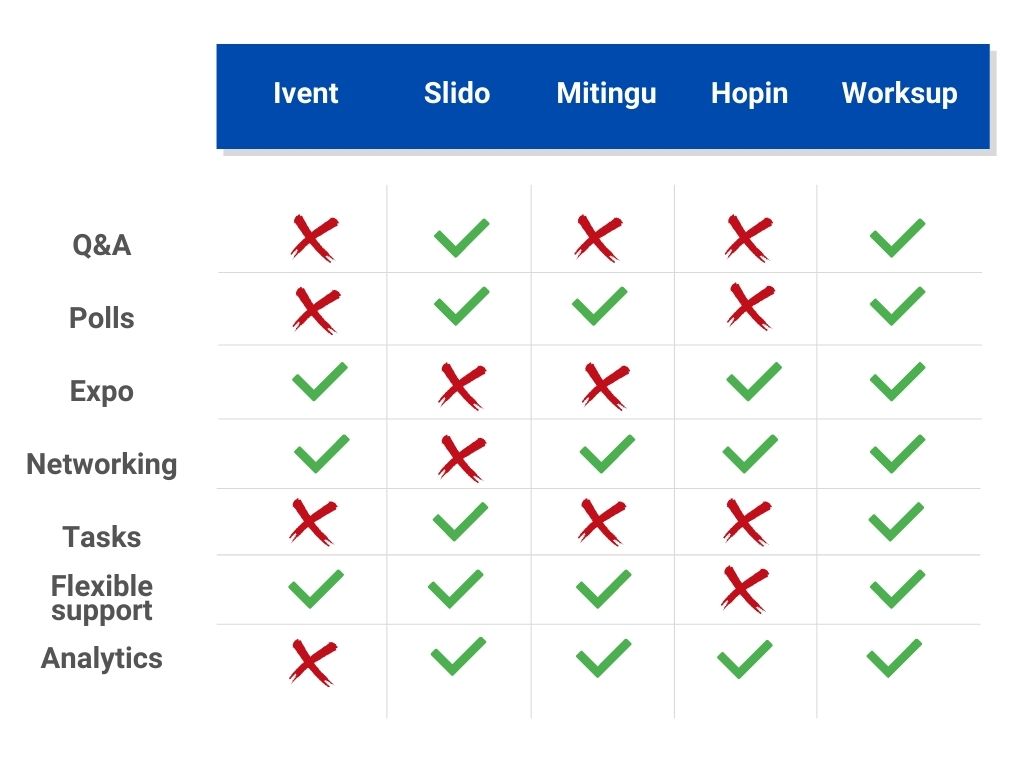Reading time:
min
There are a few things to consider when choosing the best platform for your virtual event. If you’re hosting an event, you’ll need to choose a live platform that allows you and your attendees to connect in real time. We’ve put together five steps on how to choose the best platform for your virtual events that will ensure smooth sailing as you host and promote your next event.
1. Start with “Why?”
First of all, before making any subscriptions, ask yourself: “Why do I do this?” What do you need to achieve with this particular virtual event? Is it providing a playground for virtual networking to let participants easily chat with each other? Making an outstanding virtual expo to connect businesses with customers? Or maybe you’re supposed to make an engaging conference with lots of fun activities? No matter what type of event you’re organizing, start with a goal. It’ll become your constant reminder of the direction you need to move forward on each organizational step.
2. Get to know your audience

When the big goal is clear and you already know what do you need, as the next step, think about the attendees. How many of those are going to attend? Who are these people and what kind of activities they enjoy? Even small audience research will draw you a bigger picture of the expectations that might be towards the event platform, organizational level or activities during an event.
3. Create a feature comparison table
After you defined the goal and learnt about the audience, you put a puzzle together and got a better perception of what kind of requirements and expectations are in front of you. That said, now you should get a vision of what features set might be necessary for your event. Make a list of 4-6 platforms you’re considering and features that they provide. If you don’t want to create your own, Worksup already did it for you. As an example, review the comparison table presented below, feel free to save and use it whenever the time comes. In the comparison analysis, you can check the functionality of the platforms like Slido or Mitingu.

4. Dive into it
Another important step in choosing a platform for virtual events is talking with their teammate. Even though most companies are doing their best to make the functionality clear and user-friendly, don’t miss a chance to watch a demo and learn better the angles of the product you’re going to use. For example, at Worksup, we even provide free consultations to support you with creating your first virtual events assuring high usability. This option is available for both platform newcomers and existing clients that may need any help. You can book the consultation just in a few clicks. At this stage, if you think that a platform for virtual events you’ve chosen looks good but after the talk, it doesn’t feel like this anymore, turn back to point 3 and continue the search.
5. Try it out yourself
Congrats! You’re on the finish line and almost ready to make the right choice. The last hatch is to make sure that the platform you’ve decided to use not only looks and feels good but also works the same way. For that, leave an hour or two in your calendar for testing it. Create a cooked-up event very similar to your real one. Try every feature that you’re going to use. And of course, don’t forget about connecting the equipment of all stakeholders and testing it out on the platform as well.
Sometimes, even an easy at the first glance task such as choosing a platform for virtual events may require a special approach and be time-consuming. But following the right plan, you’ll be delighted with the result and feedback you get at the end.

